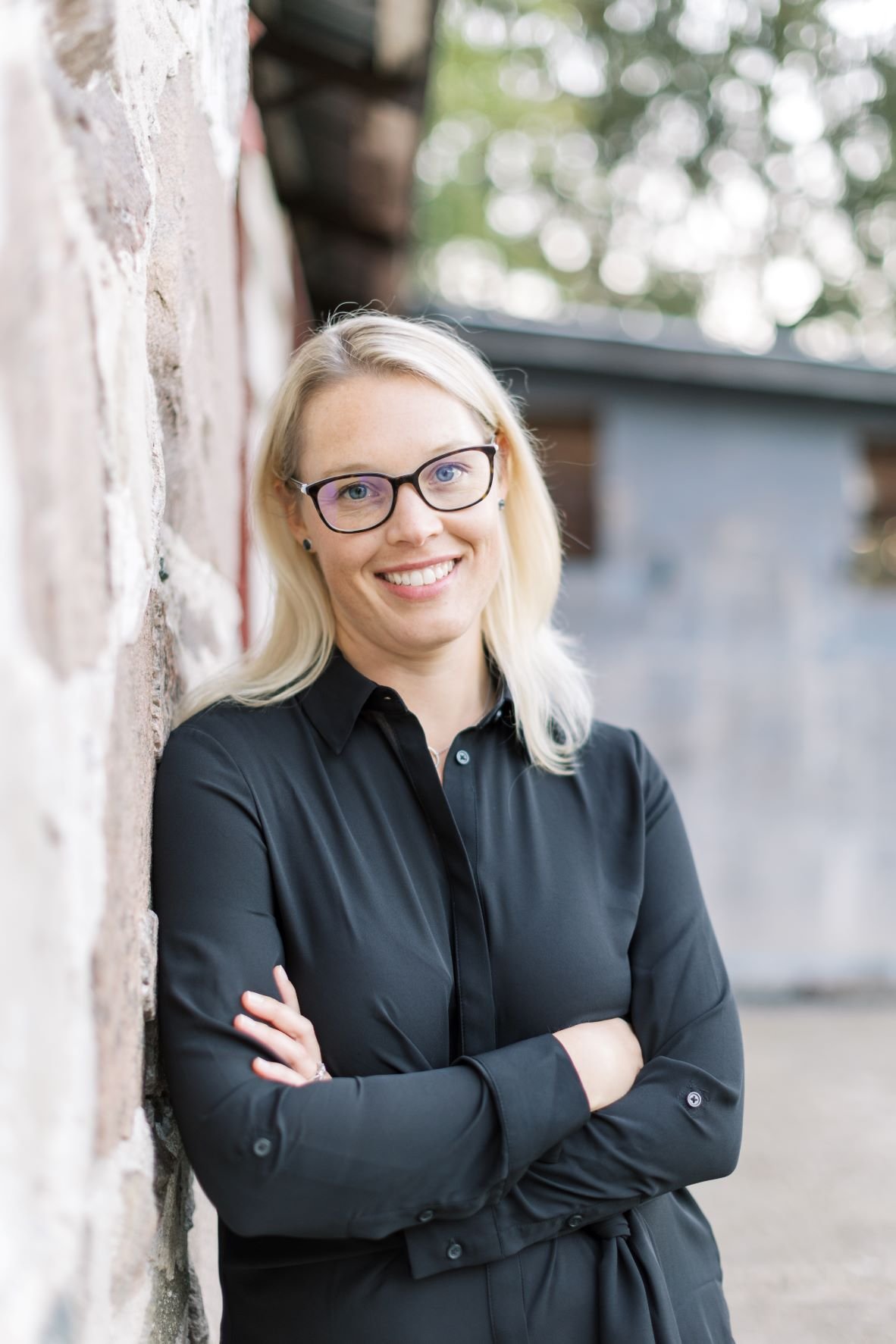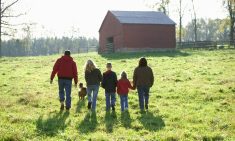What makes a farm business good at change?
Country Guide spoke with three Ontario farms to find out how they meet the challenges of change and what lessons they’ve learned on the journeys to diversification and growth.
Read Also

What to consider when setting up farm-related business ventures
Things to consider before launching a farm-adjacent side business.
Thatcher Farms
Thatcher Farms was born out of necessity.
Almost two decades ago, at a time when commodity prices were low, that need was critical. This farm had to find a better way to generate income and that had to mean diversifying and finding new markets for its pork and beef production.
But something else was at work too. Adam and Dana Thatcher had a passion for producing quality meats and also for sharing their farm story with the public. This led to their on-farm butcher shop and bakery in Rockwood, Ont.
“I love people, love talking to them about how Adam raises our animals and how amazing our products are,” explains Dana. “It made sense to build a business around what we both love to do.”
It’s been a busy 16 years, to say the least. The couple sells their own branded products, they farm full-time and they manage a staff of 20 employees, all while raising three children.
Thatcher Farms’ growth relied on a network of customers to build the business. Dana says one of the keys to their success developing that network was storytelling and providing people with an opportunity to talk to a real farmer. And while it’s a lot of work to manage their meat counters, including at local farmers markets, that’s where Dana can answer questions, share her family’s farm story and invite customers to visit them on the farm.
The Thatchers worked hard to produce quality products and build relationships that would attract new customers and maintain a loyal following. While Dana was busy with her public-facing role, Adam was hard at work behind the scenes on the farm. “We were both able to showcase our strengths,” reflects Dana, who says she’s proud of the partnership she and her husband have built together.
A unique aspect of farming is the intertwining of family roles and responsibilities and Dana acknowledges it can be challenging to both work and live with a partner or spouse. But she thinks she and Adam did a good job of finding and staying in their own lanes and navigating the blended journey together.
Navigating the regulations, the building requirements and the red tape to set up an on-farm butcher shop and bakery was another story. As a former teacher, Dana admits she had absolutely no business background and had to learn every step of the way. “Our greatest takeaway was that everything could be figured out, we just had to believe in ourselves, follow our passion to showcase our farm and products, and find the right people to help us do it,” she says.
The highlight year came in 2019 when the Thatchers’ added an agri-tourism element to the business, opening a farm-themed play yard with a corn maze, pumpkin patch and strawberry picking. Unfortunately, those activities were cut short when the pandemic hit the following year, but Dana says, “I’m proud of our willingness to try new things and the success we generated.”
The pandemic taught the Thatchers other lessons, too. When supply interruptions had an impact on grocery store shelves, a new wave of customers turned to the farm to feed their families. They were grateful for the boom in customers that allowed them to conduct business as usual but were disappointed to see many return to grocery stores when supplies were re-stocked and pandemic restrictions eased.
Over the years the Thatchers also learned the importance of aligning themselves with the right people — people who shared their vision and passion. The couple leaned heavily on business advisors, including their lender, accountant and bookkeeper, especially in the early days when they were learning how to build a business plan, implement new processes and manage staff.
Building the business required a lot of thinking outside the box and personal faith to bring it all together. So, when one of their key advisors couldn’t see their vision and didn’t believe in what they were doing, they made a hard decision to find someone new. Dana says learning to trust themselves over an industry expert was tough, but essential. They’ve changed advisors three times in 16 years at their own expense to make sure they had the right support team.
Dana and Adam applied the same principle to managing their staff, too. They selected a passionate group to serve customers and deliver products they could be proud of. “Curating the right team was one of the hardest challenges,” Dana says. “We’ve been fortunate to have such tremendous staff.” And like any employer she had to learn how to have constructive conversations to help her team grow alongside the farm business.
Dana says reaching out to other farmers with similar businesses helped them overcome challenges and find inspiration. They also belong to industry groups and local food organizations which helped them grow the business and be named the Outstanding Young Farmers for Ontario in 2013.
Looking back, Dana says asking questions was key to building their business. They didn’t hesitate to reach out to fellow farmers and industry advisors to ask for advice. Giving back is just as important to the Thatchers. They’re very open to answering questions or discussing their business experience with others. “If the right answer to even the simplest question can help someone else on their farm journey, we are happy to help,” says Dana.
Today, the Thatchers are combining everything they’ve learned and transitioning in a new direction. After 16 years of being open to the public seven days a week, they’re closing the doors on this significant chapter of their lives, one that encompassed much of their identity.
But as one business ends, another begins. In 2022, they launched Barn Swallow Fields, an on-farm event facility to host parties, weddings and corporate events between May and October. It’s already completely booked for 2024.
“I really feel we made a difference,” says Dana, reflecting on their farm business journey. “I’m struggling with feelings of guilt and sadness about leaving our loyal customers, but now is the time to focus on our family and farm and look towards new opportunities.”
The biggest lesson Dana and Adam learned was to trust themselves. Dana says they never doubted their ideas and abilities and had faith that whatever decision they made, or challenge they encountered, would work out. “If you have the desire, you will find a way.”
“We have zero regrets,” says Dana. “I’ve learned that successful people go all in to make it work and that’s what we did. Now it’s time to take a step back for our family and farm to find a new balance.”
Raisin Valley Holsteins
For a young farmer like Thomas Kuipers building a new barn is building a dream.
When Kuipers returned home to the 100-cow family dairy farm in Martintown, Ont., in 2016, he quickly realized the business would need to change if they wanted to support a second generation. He was also eager to implement new ideas he’d learned at school and from working on other dairy farms, such as increasing milk production and improving cow comfort.

But designing and building a new free-stall dairy barn wasn’t just an investment in his family’s vision and goals. It was also going to be a lesson in how to manage change.
Decision-making 101
Kuipers conducted a lot of research before breaking ground on the 75′ x 270′ barn — and he’s glad he did. Along with his dad, they toured nearly 20 dairy barns to get ideas, talk to farmers about their experiences and see how new concepts worked — or didn’t. The father-son team even returned to some farms multiple times loaded with additional questions.
“You have to put yourself out there and ask questions,” says Kuipers. “Don’t be afraid. People are always willing to share.”
The family gave themselves a year to research and plan and to consult advisors such as nutritionists, veterinarians, equipment companies, lenders and accountants. Kuipers also spent a lot of time learning about new concepts to determine how they would work on their farm.
For example, Kuipers wanted to install deep bedded stalls. He admits his dad didn’t like the idea at first, preferring the more familiar mats, but Kuipers was determined, believing it would help achieve his goals for herd sustainability. “In the end, we all agreed,” he says.
They carefully chose their professional team by researching and by sourcing testimonials from fellow farmers. Kuipers says that finding the right contractor is essential, especially for such a significant building project. The family was impressed with their choice and were grateful for the contractor’s ability to manage issues, such as weather delays, permits and inspections.
On-the-spot decisions meant that Kuipers had to hone his decision-making skills fast. “I learned to rely on the experts, but that I also had to be available to make decisions throughout the entire build,” says Kuipers. “There are a lot of moving parts to such a large project and it was a challenge to piece everything together.”
If at first you don’t succeed, try again
After months of construction, the Kuipers moved their cows into the new barn in October 2017. Everything was great for the first week… and then the problems began. Almost immediately the cows developed sore feet, causing health concerns and requiring extra labour to bring them in to the robot milkers.
They had opted for a recommended rolled concrete floor without doing thorough research. “It’s the only element of the build that I overlooked a little and if I had to do it all over again, I would have been more diligent about investigating options,” says Kuipers.
They consulted their herd management team and within two months installed rubber flooring throughout the barn. It was a hard lesson for the family, but one that reminded them of the importance of healthy feet. Since then, Kuipers prioritizes hoof health. He completed a hoof trimming course and invested in his own chute to treat and care for the herd himself.
The second challenge was a result of the deep bedded stalls — the very ones Kuipers had advocated for. It took a year to fine-tune the chopped straw length for the stalls because there was little reference literature to consult. And while the stalls did boost comfort for the first year and a half, the lime used in the bedding mix started to build up and form a concrete-like surface that was anything but comfortable. Kuipers went back to fact-finding and consulted fellow dairy farmers. The solution? They added an attachment to their skid steer to regularly mix the bedding.
“Never assume you know everything and don’t be afraid to admit when you’re wrong,” says Kuipers. “Troubleshoot with others who are happy to share what they’ve learned from their own struggles and success.”
Stay focused on your goals
It’s six years later and the family continues to reap the rewards of their investment and lessons learned along the way. Kuipers says it took a year to get the barn and cows where they wanted them and another year to fine-tune — and they’re always looking for new ways to improve the environment for their cows.
“Our priorities and goals haven’t changed,” notes Kuipers, saying any changes they make to their herd, nutrition, genetics or housing must all contribute to their goals of increasing production, improving cow comfort and enhancing labour efficiencies.
Kuipers says they’ve learned to measure their success by “asking” the cows. He says their cows are noticeably healthier and lasting longer, reproduction has improved and milk production is increasing.
“There will be mistakes, but what matters is how you learn from them and become resilient,” says Kuipers.
Circle R Livestock
Building a serious sheep business from the ground up takes vision and determination.
And despite their fair share of doubters and little industry information, Ryan and Romy Schill have done just that, growing their flock from 25 to 800 ewes and carving out a full-time farming career on their 100-acre farm in Wallenstein, Ont.

How did they do it? They learned how to make their farm business work for them.
“We wanted to find a way to support both of us on the farm full-time and our family with the existing land base,” says Ryan, noting the limited opportunities to purchase surrounding land. “It was necessary to increase efficiencies and build a sustainable business that worked for our family.”
On a whim, Ryan bought his first group of 25 ewes 19 years ago because he had extra hay and space in the barn. At the time, the couple were raising hogs, beef and layer hens. While the sheep flock grew incrementally over the years, market prices softened for beef and pork and their barn and surrounding buildings needed upgrades and repair. The Schills took a hard look at their farm business, goals and growing family and decided to go all-in with sheep. In 2018 they built a new barn and doubled their flock to 700 ewes.
Ryan admits raising sheep was an experiment at first. They had to learn the intricacies of managing their flock, find their own markets, and adjust breeding and lambing schedules.
One year after the new barn build, both Ryan and Romy could check off goal number one: they were both working on the farm full-time, allowing more flexibility to raise their family and manage the growing workload. Their three children also enjoy working with the animals which Romy thinks is because the sheep are smaller compared to other livestock so it’s easier for the kids to feel comfortable and confident working with them.
Build your dream
When it came to building the barn of their dreams — a 98′ x 146′ structure with three feed alleys and flexible penning — the Schills got a lesson in the importance of numbers. Thankfully, they had kept careful production records for their crops and livestock over the years, continuously measuring costs and efficiencies, which helped them build a solid business plan for their lender.
“It was a big jump for us, but we knew we were ready for the commitment,” says Romy.
It was essential to select a trusted contractor and while they were happy with their choice and the quality of work, they soon realized that building a sheep-specific barn was going to be a challenge because there aren’t many large sheep barns in Ontario to reference. “There are plenty of dairy and beef barns being built that have proven systems or recommended guidelines, but very little for sheep,” says Romy. As a result, the couple learned how to be decisive, making decisions about everything from the ventilation system to the type of penning suitable for sheep.
The good news was that they already knew what they liked and didn’t like from their years on the farm and had plenty of experience retrofitting the original bank barn. “We built flexibility into every aspect of our plan,” notes Ryan, explaining the barn design can be adjusted to change the layout of the penning and provide enough space for tractors to drive into the alleys if necessary.
Careful planning and research meant the couple encountered few surprises throughout the build. But as is the case with any new endeavour, Ryan says they should have paid more attention to some of the details, such as the electrical plan. As a result, receptacles aren’t placed where they would like them to be, but overall everything is manageable.
Just do it
Throughout the process the Schills encountered people who questioned their business decisions. Romy believes it’s because opportunities in the sheep industry are often misunderstood. “There’s huge potential in this industry,” she says, noting that, lamb is one of the most popular meats consumed globally. “Demand is growing for Canadian lamb and our multicultural population is driving consumption.”
They experienced misconceptions associated with investing in the sheep industry in the early stages of farm expansion when their lender questioned the viability of building a sheep-specific structure. Their assurance that flexibility was part of the design and that the barn could easily be adjusted for other types of livestock was enough for the couple to secure financial support, but it was an important lesson in self-advocacy.
They also experienced doubt from fellow farmers who aren’t as familiar with lamb markets. “There have been times when we haven’t been taken seriously as a sheep farmer,” says Romy. “And I think that comes from misconceptions about the size and potential the sheep industry has to offer.”
Don’t give up
The Schills admit there were moments when they questioned their decisions — such as when their move-in date for the new barn got delayed by a month and they had to receive a load of ewes despite not having a barn to house them. Or during the first round of lambing in the new barn when serious health problems circulated through the flock resulting in a 30 per cent mortality rate of aborted lambs.
“We’ve overcome a lot and we’re proud of how far we’ve come together,” says Romy. “It’s a great feeling to be able to work together, make our own decisions and see everything come together.”
Today, Circle R Livestock has reached full capacity in their new barn and have transitioned their management approach from expansion to enhancing production efficiencies. They have four lambing rotations to spread out the workload and maintain a steady supply of lambs throughout the year. The couple has also found a consistent market for their lambs and demand for their breeding stock.
Romy has created a value-added business, Revolution Wool Company, that uses the wool from their flock to create raw wool, natural and dyed yarns, bedding, carded wool, roving and handmade items for local artisan markets. She’s expanded the business to an online store (revolutionwoolco.com) and is proud to say that over the past two years she’s used all the wool from their flock and now sources from local sheep farmers.
Looking back, the Schills are glad they set goals, listened to their intuition and made the leap to expand their farm when they did. “It’s been fun and I wouldn’t have wanted to do it with anyone else,” quips Romy.
– This article was originally published in the March 2024 issue of Country Guide.
















